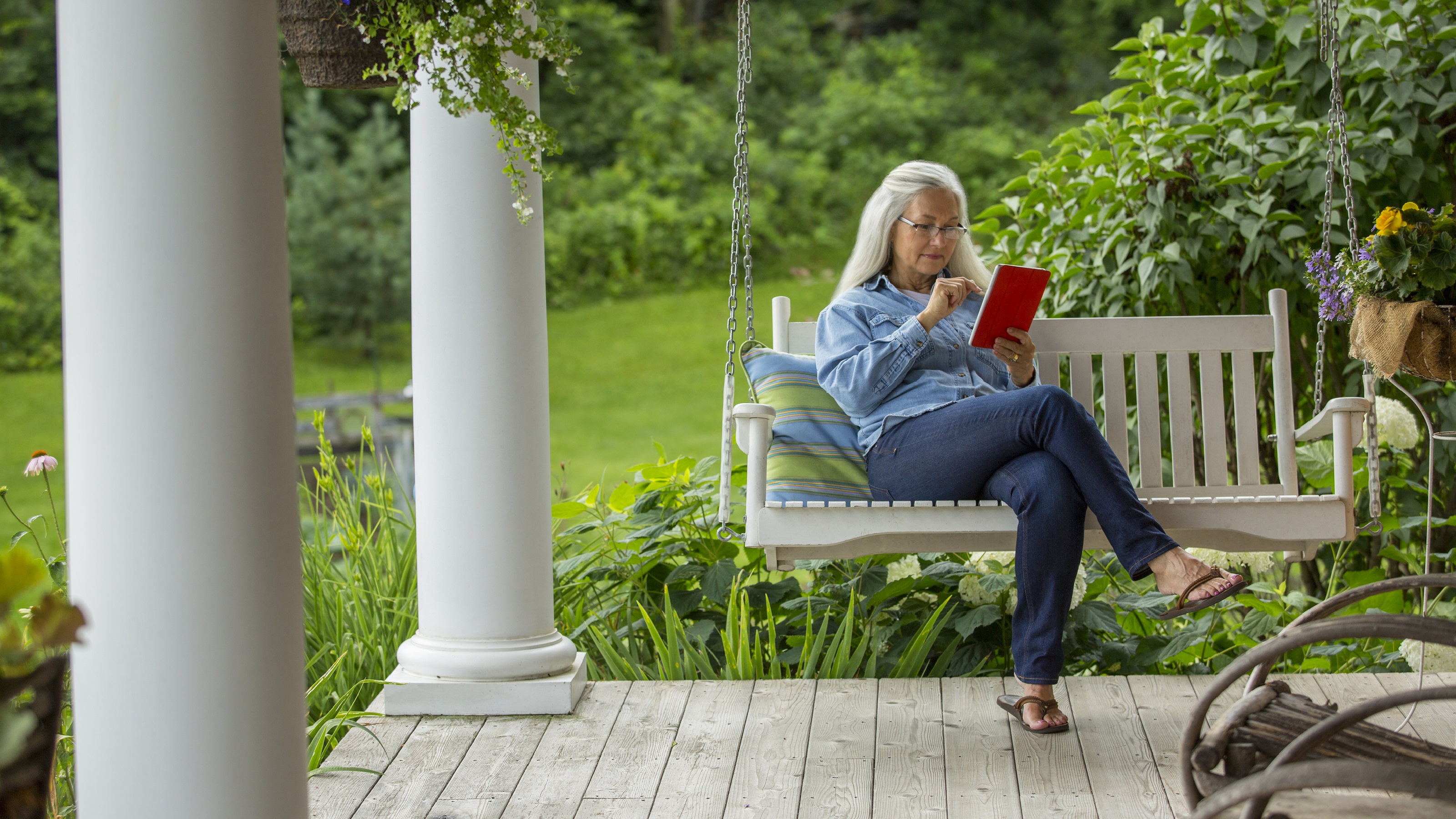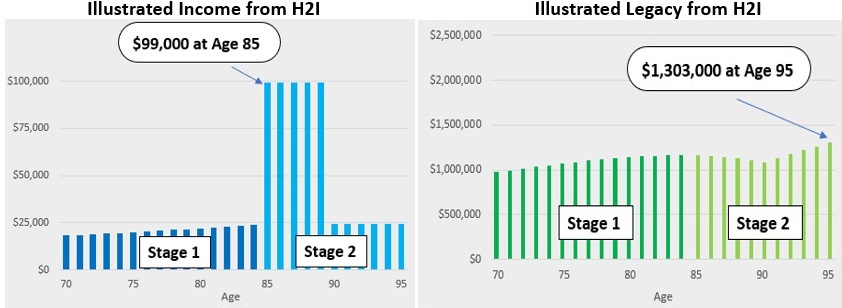How 'Home-Based Planning' Can Address Long-Term Care Costs
Traditional planning for the cost of long-term care doesn't reflect the realities of what the costs are and how they'll be paid.


We’re living longer in retirement, and more of us want to age in place rather than sell the family home. A recent policy paper by AARP listed the goals of the age-in-place population:
- Ensure access to affordable, high-quality long-term services and supports (LTSS) that maximizes the dignity, independence and protection of older adults
- Create age-friendly, livable communities that enable people to age in place and continue as engaged members of their communities
- Support family caregivers
- Provide ample opportunities to generate, save and preserve financial resources
Those goals all seem reasonable and smart. Our focus is around number four — and about planning to preserve resources while meeting retiree objectives.
Let’s start with costs.
From just $107.88 $24.99 for Kiplinger Personal Finance
Become a smarter, better informed investor. Subscribe from just $107.88 $24.99, plus get up to 4 Special Issues

Sign up for Kiplinger’s Free Newsletters
Profit and prosper with the best of expert advice on investing, taxes, retirement, personal finance and more - straight to your e-mail.
Profit and prosper with the best of expert advice - straight to your e-mail.
How much could Boomers pay for LTC costs?
Americans incur more than $400 billion in LTTS costs every year. People over 65 make up the bulk of those who need care at a nursing facility and a larger percentage of those who receive in-home care to assist with daily activities. Home care can cost about $62,000 a year, while care in a facility could be $108,000 to $126,000. Here’s a projection of average costs considering the duration of a stay for a man, a woman and a couple.

At some point, what you are required to pay for long-term health care may outstrip your bank and investment accounts and force you to dip into your hard-earned retirement savings. As you can see, the average cost for a private room in a nursing home for a couple can be as much as $745,000.
Since the probability of incurring at least a portion of these costs is 70%, you need to plan ahead to ensure your financial resources are available when you need them and in a way that you can easily access.
How Boomers plan to pay for long-term care
We have options, including some provided by the government, but in many cases, they require compromises in how to spend our money, or decisions about our lifestyles we would rather not make. From a study that’s about 10 years old, the four most popular options that participants chose for funding LTC were:
- Use personal savings
- Purchase a private long-term care insurance policy
- Spend down savings to qualify for Medicaid
- Sell home and use the proceeds
Others in the study hadn’t even thought about how they would cover LTC costs.
While I’m sure the planning has changed in the interim, I consider these options pretty challenging and, in some cases, life-changing. More recent studies agree that purchasing long-term care insurance at the Boomer’s current age is quite expensive. And with such a large percentage of the population wanting to age in place (a recent AARP survey puts it at more than 75% of adults over 50), selling your home is less appealing.
What is Sally going to do?
Sally, a 70-year-old woman who stands in as our example retiree, is now focused on this issue, and she is wondering about next steps, even with her $1.5 million in retirement savings and $1 million in equity in her home. Sally has done a good job using savings within a plan to meet her retirement goals of income, liquidity and legacy. Now she wants to explore how to address the expense of long-term care within or in addition to that plan.
The thought of spending on average of $375,000 (roughly the average cost of a three-year stay with a private room in a nursing home) is pretty daunting. Here are some options she’s thought about.
- Set aside investments so she can pay for LTC with her personal savings. That would require her to spend less, impacting her lifestyle even during the years that she feels great.
- Buy insurance to pay for long-term care. Like many consumers, Sally didn’t buy long-term care insurance when she was younger. Buying it now will be much more expensive and reduce funds for other expenses.
- Spend down savings to qualify for Medicaid. She has a lot of savings, so this is probably impractical.
- Stay at home and bring in help. Sally wants to age in place for as long as she can. She is a little nervous about the costs for care, along with home modifications — and the need to spend down savings at such a rapid rate.
Is there another option?
What about home-based planning?
Since she’ll be aging in place, she plans to live in her home for a long time and thus considers “home-based planning.” The specific option Sally considers is an approach called HomeEquity2Income (H2I), which combines a home equity conversion mortgage (HECM) with a deferred income annuity called a QLAC. This combination provides both current cash flow and a line of credit through an HECM to reduce or eliminate the necessity to spend her savings on long-term care costs. For more on this, see my article Transform Your Retirement Plan With This Powerful Combo.
To illustrate, here’s how H2I measures up for Sally when she uses $200,000 from her rollover IRA savings to purchase a QLAC, establishes an HECM line of credit of $330,000 against the equity in her home and funds $75,000 per year in LTC costs from 85 to 89 only from H2I — not from her retirement savings.

In summary, this is what H2I does as measured against her personal objectives:
- Don’t run out of money: $20,000 additional income at start and continuing for life
- Grow income each year: 2%-per-year increase until age 85
- Lower income taxes: Income tax-free until age 85
- Cover unfunded expenses: $75,000 per year in LTC costs from 85 to 89
- Leave a meaningful legacy: $1.3 million
Now let’s address her retirement savings and plan for retirement income.
What about drawing down only from an HECM?
While the coverage of $375,000 in LTC costs is pretty nice, couldn’t Sally have done the same thing without transferring $200,000 from her savings to purchase QLAC and simply draw down from HECM?
Here is our response:
- Sally got more than the LTC costs covered, as H2I also provided tax-favored income starting at $20,000 and continuing for life.
- Sally still passed along a legacy of over $1.3 million just from H2I.
With only, say, a $50,000 QLAC premium, her legacy at 85 would be reduced by more than half, and her liquidity would be wiped out at age 90. With no QLAC, her legacy is reduced by 75%, and liquidity again is gone by age 90. What the chart below shows is that within the statutory limits, the maximum funding of a QLAC makes sense.

Making up the difference in her retirement income plan
What about the transfer of $200,000 from her rollover IRA savings? While the analysis requires you to take a hard look at what Sally is doing with her retirement savings, here are a few points to consider:
- She’s deferring taxable RMDs (required minimum distributions) to age 85 — and creating tax-free income from HECM.
- With the substitution of immediate income annuities for a portion of her fixed income portfolio, she can replicate or exceed her original income even with the $200,000 outflow.
- With greater safe income, she can increase her allocation to equities.
Conclusions for Boomers who want to age in place
- LTC insurance purchased by Boomers is costly and, where possible, should be used to fund “catastrophic” large-amount LTC costs.
- There will be other costs for age-in-place Boomers beyond care-related payments.
- You can minimize the drain on retirement savings to cover LTC costs, unless you’re OK going on Medicaid.
We’ve taken you through the steps to address the costs of long-term care with a H2I plan, based on your own assets and needs. Visit Go2Income Personal Planning to start a plan risk-free. One of our analysts can help you make adjustments as you build a plan that gives you lifetime income, greater liquidity — and a clear path to paying long-term care costs.
Related Content
- Things Change: Is It Time to Update Your Retirement Plan?
- How Your Home Can Fill Gaps in Your Retirement Plan
- A Roth Conversion Alternative That Addresses Long-Term Care
- New Payroll Tax Targets Long-Term Care Expenses
- Four Tax-Friendly Ways to Pay for Long-Term Care Insurance
Profit and prosper with the best of Kiplinger's advice on investing, taxes, retirement, personal finance and much more. Delivered daily. Enter your email in the box and click Sign Me Up.

Jerry Golden is the founder and CEO of Golden Retirement Advisors Inc. He specializes in helping consumers create retirement plans that provide income that cannot be outlived. Find out more at Go2income.com, where consumers can explore all types of income annuity options, anonymously and at no cost.
-
 'Humbug!' Say Consumers, Despite Hot GDP: Stock Market Today
'Humbug!' Say Consumers, Despite Hot GDP: Stock Market Today"The stock market is not the economy," they say, but both things are up. Yet one survey says people are still feeling down in the middle of this complex season.
-
 The SEC Is Concerned for Older Investors and Retirement Savers. Here's What You Should Know
The SEC Is Concerned for Older Investors and Retirement Savers. Here's What You Should KnowThe SEC focusing on older investors, retirement and college savers, and private securities. Here's how those changes impact you.
-
 Vesting, Catch-Ups and Roths: The 401(k) Knowledge Quiz
Vesting, Catch-Ups and Roths: The 401(k) Knowledge QuizQuiz Test your understanding of key 401(k) concepts with our quick quiz.
-
 How to Protect Yourself and Others From a Troubled Adult Child: A Lesson from Real Life
How to Protect Yourself and Others From a Troubled Adult Child: A Lesson from Real LifeThis case of a violent adult son whose parents are in denial is an example of the extreme risks some parents face if they neglect essential safety precautions.
-
 To Build Client Relationships That Last, Embrace Simplicity
To Build Client Relationships That Last, Embrace SimplicityAs more automation becomes the norm, you can distinguish yourself as a financial professional by using technology wisely and prioritizing personal touches.
-
 Client Demand Is Forcing Financial Advisers to Specialize: How to Deliver
Client Demand Is Forcing Financial Advisers to Specialize: How to DeliverThe complexity of wealthy clients' needs — combined with AI and consumer demand — suggests the future of financial planning belongs to specialized experts.
-
 A Financial Planner Takes a Deep Dive Into How Charitable Trusts Benefit You and Your Favorite Charities
A Financial Planner Takes a Deep Dive Into How Charitable Trusts Benefit You and Your Favorite CharitiesThese dual-purpose tools let affluent families combine philanthropic goals with advanced tax planning to generate income, reduce estate taxes and preserve wealth.
-
 A 5-Step Plan for Parents of Children With Special Needs, From a Financial Planner
A 5-Step Plan for Parents of Children With Special Needs, From a Financial PlannerGuidance to help ensure your child's needs are supported now and in the future – while protecting your own financial well-being.
-
 How Financial Advisers Can Best Help Widowed and Divorced Women
How Financial Advisers Can Best Help Widowed and Divorced WomenApproaching conversations with empathy and compassion is key to helping them find clarity and confidence and take control of their financial futures.
-
 A Wealth Adviser Explains: 4 Times I'd Give the Green Light for a Roth Conversion (and 4 Times I'd Say It's a No-Go)
A Wealth Adviser Explains: 4 Times I'd Give the Green Light for a Roth Conversion (and 4 Times I'd Say It's a No-Go)Roth conversions should never be done on a whim — they're a product of careful timing and long-term tax considerations. So how can you tell whether to go ahead?
-
 A 4-Step Anxiety-Reducing Retirement Road Map, From a Financial Adviser
A 4-Step Anxiety-Reducing Retirement Road Map, From a Financial AdviserThis helpful process covers everything from assessing your current finances and risks to implementing and managing your personalized retirement income plan.